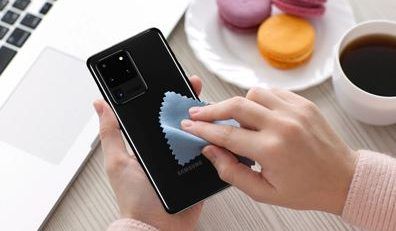How to Apply UV Glue To Screen Protectors
It’s time to admit that, for most of us, our phones have become an extension of ourselves. The very idea of breaking or damaging our phones already makes many break out in a cold sweat – so what is the best way of protecting them?
Screen protectors are an invaluable defence against wear and tear as phone screens must withstand our constant use. Tempered glass screen protectors have risen to popularity in recent years as they offered greater protection than the plastic protectors that initially dominated the smartphone market. However, more phone companies are producing devices with curved screens, such as the Samsung Galaxy S10 and Huawei Mate 20 Pro, that are not compatible with traditional tempered glass protectors.
Initially, screen protector companies tried all sorts of ways to adapt their products for the curved screen movement. However, people using conventional glass screen protectors on their new touch screens soon discovered problems with screen sensitivity and dust accumulating on the edges of their phones.
Currently, the best screen protectors for curved smartphones on the market require a combination of LOCA glue and UV light. Liquid optically clear adhesive (LOCA) – or UV glue – is especially suited for phone touch panels due to its superior optical properties. As the glue is clear, it can be applied all over the screen and not just the edges, eliminating air gaps that were initially causing headache with other screen protectors. The glue is cured with UV light, which causes a chemical reaction and forms a strong bond between the glass and LCD screen. Any UV light can be used to cure the glue, but stronger bulbs mean shorter curing times.
How to apply LOCA glue to screen protectors
First, you need to make sure your phone screen is free from dust by wiping it with an alcohol pad and drying it using a cleaning cloth. If your screen protector kit included an installer frame, you should secure your phone into the frame and cover the top speaker with adhesive tape to protect it. Now it’s time to apply the LOCA glue. The glue itself is not particularly viscous, so only a small amount is needed as it will spread across the screen. To make sure no air bubbles become trapped when applying the glue, we recommend watching our short tutorial video above.
After carefully placing the glass protector onto your phone, you should hold the UV light close to your screen to start the curing process. Move the light around to ensure an even curing across the screen – the whole process should take around 30 seconds to 2 minutes depending on the strength of your bulb. Finally, wipe your phone again with a new alcohol pad and take it out of the installer frame. Your phone is now well-protected and may save you from future screen repairs!
If you don’t have access to a UV light or simply don’t want to go through the hassle, you can bring your phone into CityPhones and we will do it for you. Our specialists are experienced in applying LOCA glue to iPhone, Samsung, Google Pixel, Huawei and other curved smartphone screens. Contact us or bring your phone in-store to get a new screen protector fitted to your phone.













Leave a Reply